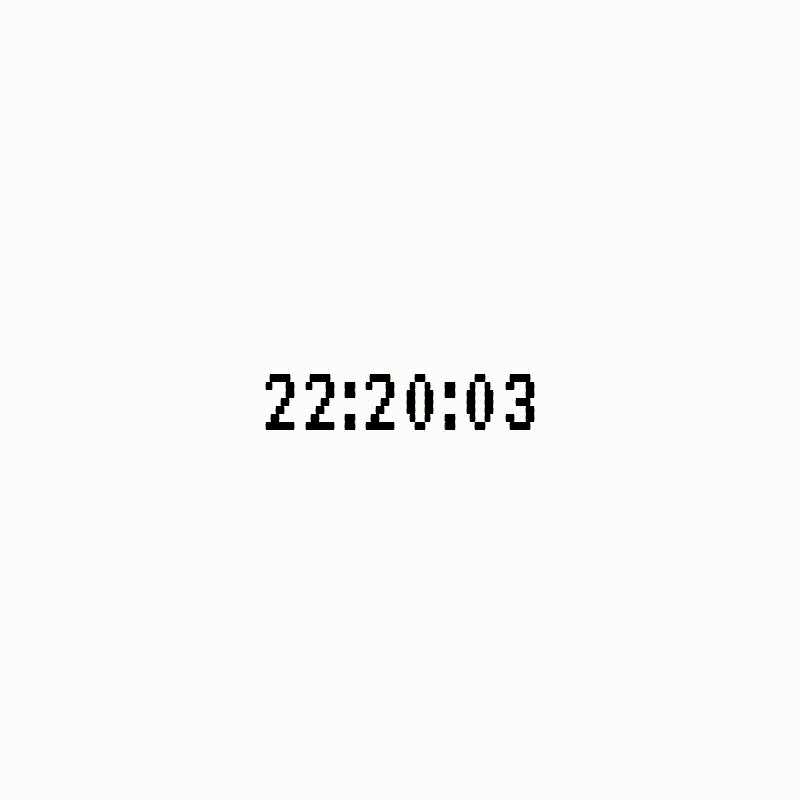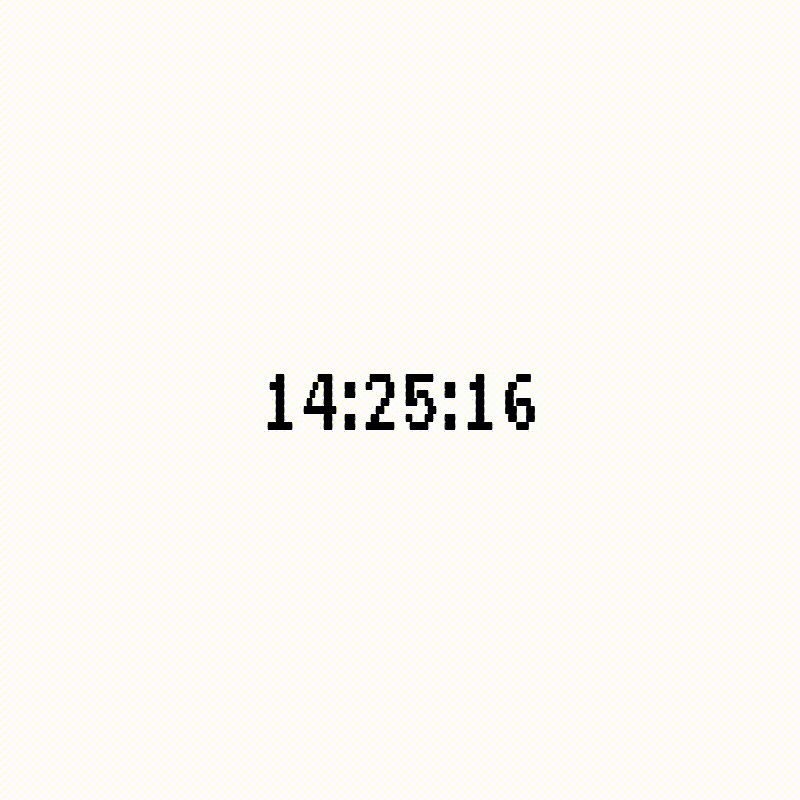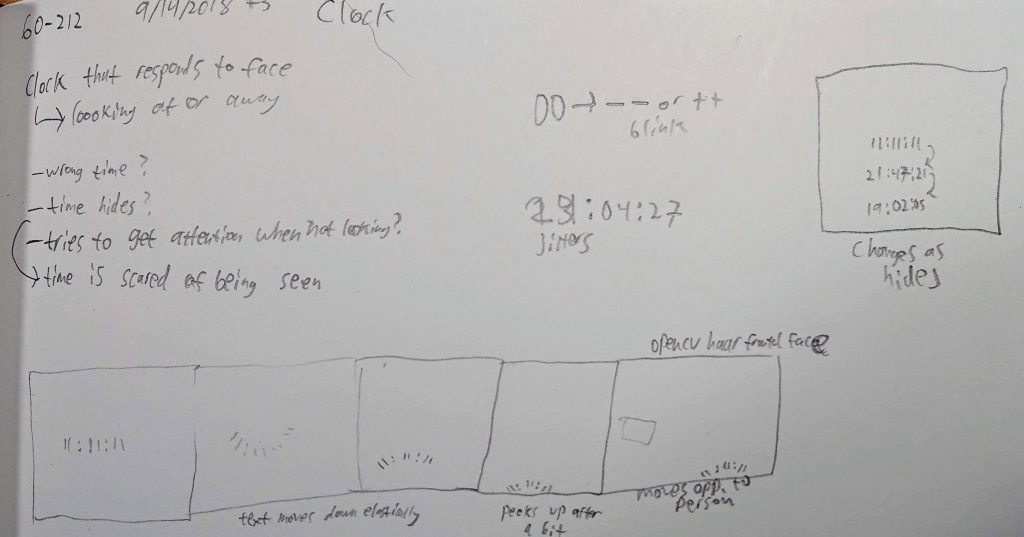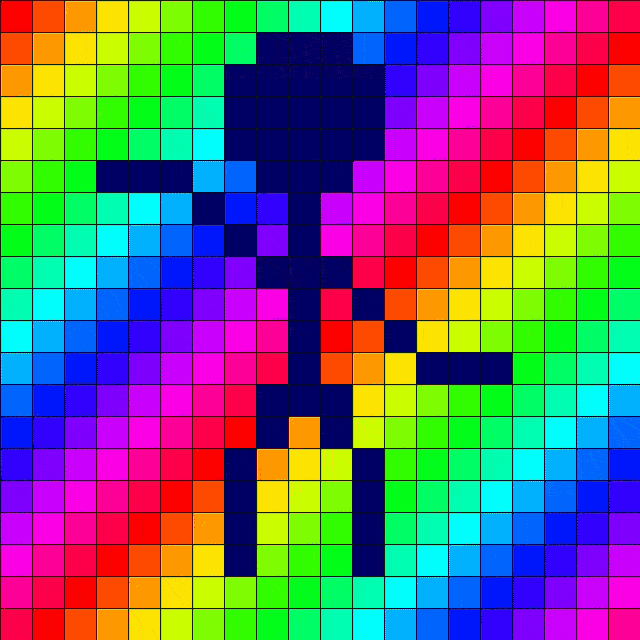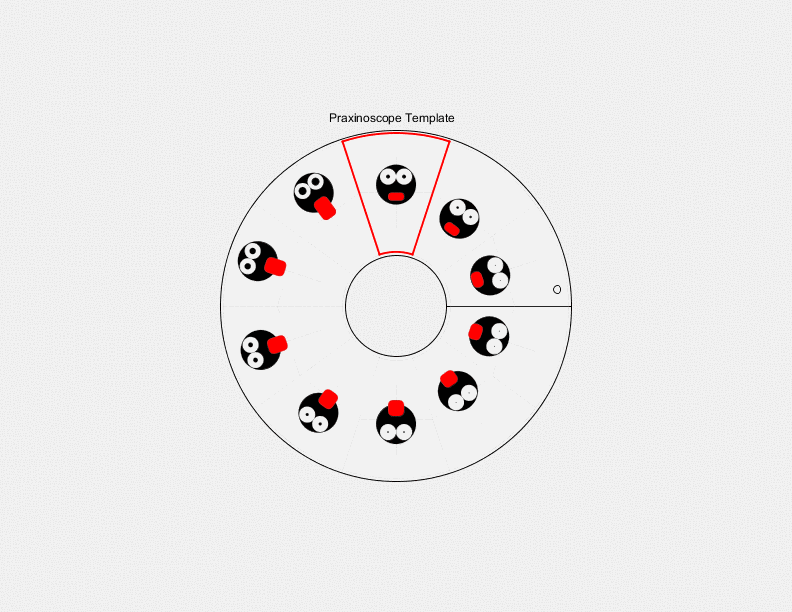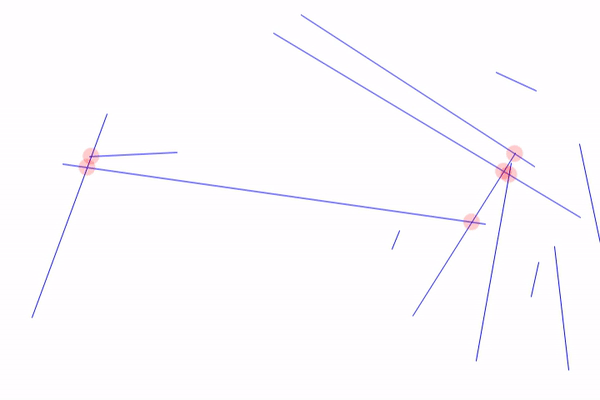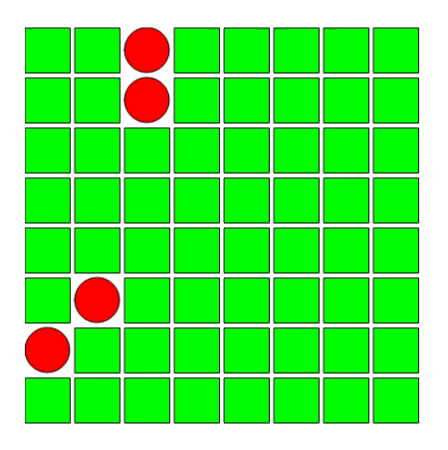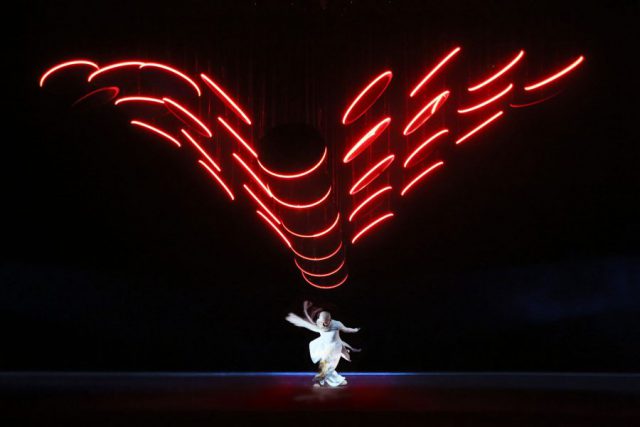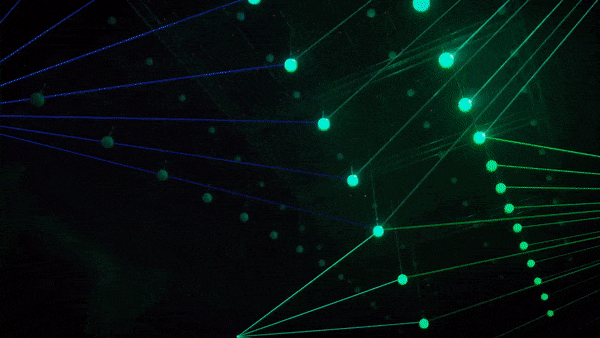/* Sapeck 9/12/2017
"sapeck-AnimatedLoop"
Based on a template for creating a looping animation in Processing/Java by Prof. Golan Levin, January 2018
60-212 Carnegie Mellon University
Copyright (C) 2018-present Sapeck, Prof. Golan Levin
This program is free software: you can redistribute it and/or modify it under the terms of the GNU General Public License version 3 as published by the Free Software Foundation.
This program is distributed in the hope that it will be useful, but WITHOUT ANY WARRANTY; without even the implied warranty of MERCHANTABILITY or FITNESS FOR A PARTICULAR PURPOSE. See the GNU General Public License for more details.
*/
//===================================================
// Global variables.
String myNickname = "sapeck";
int nFramesInLoop = 500;
int nElapsedFrames;
boolean bRecording;
//===================================================
void setup() {
size (640, 640);
noiseSeed(283092);
colorMode(HSB, 100);
bRecording = false;
nElapsedFrames = 0;
}
//===================================================
void keyPressed() {
if ((key == 'f') || (key == 'F')) {
bRecording = true;
nElapsedFrames = 0;
}
}
//===================================================
void draw() {
// Compute a percentage (0...1) representing where we are in the loop.
float percentCompleteFraction = 0;
if (bRecording) {
percentCompleteFraction = (float) nElapsedFrames / (float)nFramesInLoop;
} else {
percentCompleteFraction = (float) (frameCount % nFramesInLoop) / (float)nFramesInLoop;
}
// Render the design, based on that percentage.
renderMyDesign (percentCompleteFraction);
// If we're recording the output, save the frame to a file.
if (bRecording) {
saveFrame("frames"+width+"/" + myNickname + "_frame_" + nf(nElapsedFrames, 4) + ".png");
nElapsedFrames++;
if (nElapsedFrames >= nFramesInLoop) {
bRecording = false;
}
}
}
int DIMENSION = 20;
int colorFilled = color(0,0,100,255);
int LOOPS = 3;
PVector easeCurveBase = new PVector(0.1, 0);
int NOISESEED = 283092;
void renderMyDesign (float percent) {
background(0);
smooth();
for (int y=0;y<DIMENSION;y++) {
pushMatrix();
boolean right = (y % 2 == 0);
right = false;
int moveX = 0;
int startRow = 0;
PVector thisEaseCurve = new PVector(easeCurveBase.x+0.3*noise(y*10)/1, easeCurveBase.y+noise(y*10)/1);
if (y > (DIMENSION-1)/2) thisEaseCurve = new PVector(easeCurveBase.x-0.3*noise(y*10)/1, easeCurveBase.y-noise(y*10)/1);
float thisPercent = percent;
thisPercent = function_GeneralizedBlackmanWindow(percent,thisEaseCurve.x);
if (right) {
startRow = -1*(LOOPS-1)*width;
moveX = int(thisPercent*(LOOPS-1)*width);
} else {
moveX = int(-1*thisPercent*(LOOPS-1)*width);
}
translate(moveX ,0);
for (int loop=0;loop<LOOPS;loop++) {
for (int x=0;x<DIMENSION;x++) {
int thisBox = 0;
if (loop == LOOPS-1 && right) thisBox = MAN1[y][x];
else if (loop == LOOPS-1 && !right) thisBox = MAN2[y][x];
else if (loop == 0 && right) thisBox = MAN2[y][x];
else if (loop == 0 && !right) thisBox = MAN1[y][x];
PVector thisLoc = new PVector(x*(width/DIMENSION)+(loop*width)+startRow, y*(height/DIMENSION));
if (thisBox == 1) {
fill(colorFilled);
rect(thisLoc.x, thisLoc.y, width/DIMENSION, height/DIMENSION);
} else {
int colorX = x+y;
if (colorX > DIMENSION) colorX -= DIMENSION;
fill(color(map(colorX,0,DIMENSION,0,100),
100,
100));
rect(thisLoc.x, thisLoc.y, width/DIMENSION, height/DIMENSION);
}
}
}
popMatrix();
}
}
int[][] MAN1 = {
{0,0,0,0,0,0,0,0,0,0,0,0,0,0,0,0,0,0,0,0},
{0,0,0,0,0,0,0,0,1,1,1,0,0,0,0,0,0,0,0,0},
{0,0,0,0,0,0,0,1,1,1,1,1,0,0,0,0,0,0,0,0},
{0,0,0,0,0,0,0,1,1,1,1,1,0,0,0,0,0,0,0,0},
{0,0,0,0,0,0,0,1,1,1,1,1,0,0,0,0,0,0,0,0},
{0,0,0,1,1,1,0,0,1,1,1,0,0,0,0,0,0,0,0,0},
{0,0,0,0,0,0,1,0,0,1,0,0,0,0,0,0,0,0,0,0},
{0,0,0,0,0,0,0,1,0,1,0,0,0,0,0,0,0,0,0,0},
{0,0,0,0,0,0,0,0,1,1,1,0,0,0,0,0,0,0,0,0},
{0,0,0,0,0,0,0,0,0,1,0,1,0,0,0,0,0,0,0,0},
{0,0,0,0,0,0,0,0,0,1,0,0,1,0,0,0,0,0,0,0},
{0,0,0,0,0,0,0,0,0,1,0,0,0,1,1,1,0,0,0,0},
{0,0,0,0,0,0,0,0,1,1,1,0,0,0,0,0,0,0,0,0},
{0,0,0,0,0,0,0,0,1,0,1,0,0,0,0,0,0,0,0,0},
{0,0,0,0,0,0,0,1,0,0,0,1,0,0,0,0,0,0,0,0},
{0,0,0,0,0,0,0,1,0,0,0,1,0,0,0,0,0,0,0,0},
{0,0,0,0,0,0,0,1,0,0,0,1,0,0,0,0,0,0,0,0},
{0,0,0,0,0,0,0,1,0,0,0,1,0,0,0,0,0,0,0,0},
{0,0,0,0,0,0,0,0,0,0,0,0,0,0,0,0,0,0,0,0},
{0,0,0,0,0,0,0,0,0,0,0,0,0,0,0,0,0,0,0,0}
};
int[][] MAN2 = {
{0,0,0,0,0,0,0,0,0,0,0,0,0,0,0,0,0,0,0,0},
{0,0,0,0,0,0,0,0,1,1,1,0,0,0,0,0,0,0,0,0},
{0,0,0,0,0,0,0,1,1,1,1,1,0,0,0,0,0,0,0,0},
{0,0,0,0,0,0,0,1,1,1,1,1,0,0,0,0,0,0,0,0},
{0,0,0,0,0,0,0,1,1,1,1,1,0,0,0,0,0,0,0,0},
{0,0,0,0,0,0,0,0,1,1,1,0,0,1,1,1,0,0,0,0},
{0,0,0,0,0,0,0,0,0,1,0,0,1,0,0,0,0,0,0,0},
{0,0,0,0,0,0,0,0,0,1,0,1,0,0,0,0,0,0,0,0},
{0,0,0,0,0,0,0,0,1,1,1,0,0,0,0,0,0,0,0,0},
{0,0,0,0,0,0,0,1,0,1,0,0,0,0,0,0,0,0,0,0},
{0,0,0,0,0,0,1,0,0,1,0,0,0,0,0,0,0,0,0,0},
{0,0,0,1,1,1,0,0,0,1,0,0,0,0,0,0,0,0,0,0},
{0,0,0,0,0,0,0,0,1,1,1,0,0,0,0,0,0,0,0,0},
{0,0,0,0,0,0,0,0,1,0,1,0,0,0,0,0,0,0,0,0},
{0,0,0,0,0,0,0,1,0,0,0,1,0,0,0,0,0,0,0,0},
{0,0,0,0,0,0,0,1,0,0,0,1,0,0,0,0,0,0,0,0},
{0,0,0,0,0,0,0,1,0,0,0,1,0,0,0,0,0,0,0,0},
{0,0,0,0,0,0,0,1,0,0,0,1,0,0,0,0,0,0,0,0},
{0,0,0,0,0,0,0,0,0,0,0,0,0,0,0,0,0,0,0,0},
{0,0,0,0,0,0,0,0,0,0,0,0,0,0,0,0,0,0,0,0}
};
//===================================================
// Taken from https://github.com/golanlevin/Pattern_Master
float function_GeneralizedBlackmanWindow (float x, float a) {
// http://en.wikipedia.org/wiki/Window_function
float a0 = (1.0 - a)/2.0;
float a1 = 0.5;
float a2 = a / 2.0;
float pix = PI*x;
float y = a0 - a1*cos(2*pix) + a2*cos(4*pix);
return y;
} |
